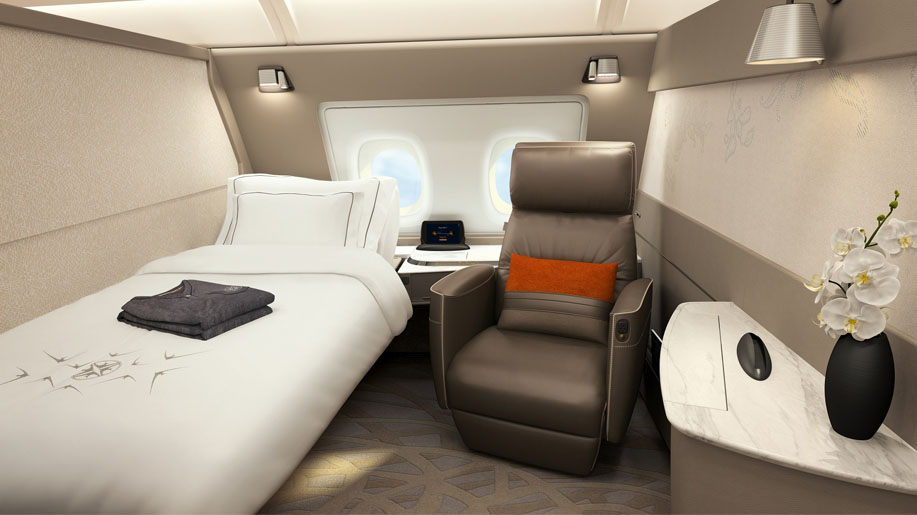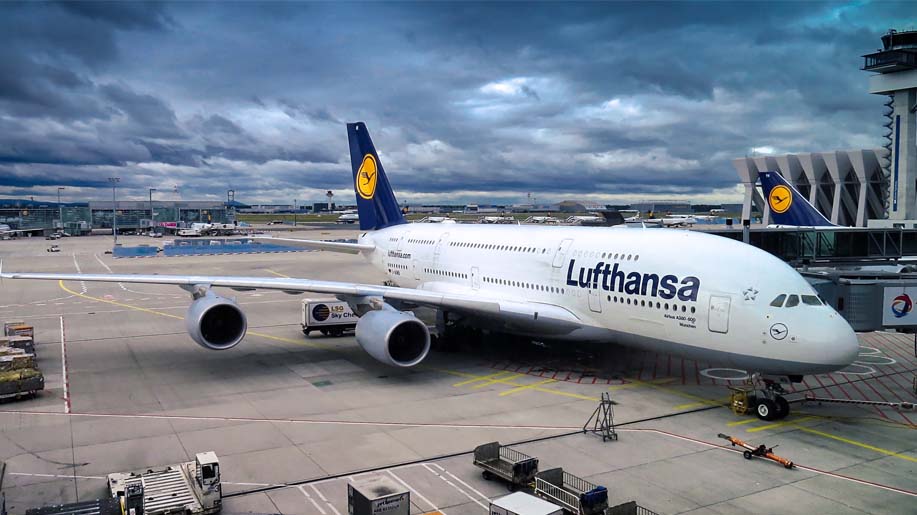
The A380 — the largest passenger airliner in the world — landed for the first time in New Delhi, India on May 6, 2007, after a nine-hour flight from Toulouse. The double-decker dramatically encircled twice over Indira Gandhi International Airport as spectators cheered in unison. Airbus stirred sufficient curiosity with this colossal aircraft that exceeded the breadth of Delhi’s runway. To make provisions for its arrival, the grass beside the runways had to be trimmed.
The ceremony at the New Delhi airport held to mark the occasion was addressed by the chairman of the now defunct Kingfisher Airlines, Vijay Mallya and the current chief operating officer (customers) at Airbus, John Leahy. This was also when Leahy acknowledged the order of five A380s and five A350s by the former. Air India was next to show interest in this aircraft type in 2009, as the national carrier aspired to meet its anticipated rise in demand in 2012.
What followed was a series of unfortunate events that deterred the official arrival of the A380 in the Indian aviation industry. Airbus cancelled its order with Kingfisher Airlines after the airline shut shop due to monumental losses in October 2012. Air India’s A380 order didn’t materialise either as it focussed on inducting more narrow-bodied aircraft to fly domestic routes instead. Further, the Ministry of Civil Aviation placed an indefinite ban on international airlines flying their A380s in India. The prohibition was the result of concerns that foreign airlines could grab a high share of international traffic with their massive A380s, hurting state-run Air India. The lack of infrastructure at airports to handle the aircraft was another cause for the ban.
The beginning of 2014 saw a path-breaking development by the Ministry of Civil Aviation, (after consultations with the Directorate General of Civil Aviation (DGCA)), when it lifted the ban on A380s flying to India. “Now, flights of A380 to India will be allowed to [land at] airports, which are equipped to handle them. The operation of A380s will help airports generate more revenue, give more comfortable and luxurious travel to passengers, liberalise the civil aviation milieu in India and boost the image of Indian civil aviation in the international market. As per available information, Singapore Airlines, Emirates and Lufthansa are interested in operating A380 aircraft in India on various international routes,” said a January 2014 press release by the ministry.
DGCA announced that the A380s would be served by four Indian airports capable of handling them — Delhi, Mumbai, Bengaluru and Hyderabad. Of these, only the Mumbai and Delhi airports have welcomed the A380 in the country as of now. “The design for Bengaluru Airport to accommodate large aircraft is underway. This new runway is expected to be operational in the last quarter of 2019,” said a spokesperson of Bangalore International Airport.

SINGAPORE AIRLINES
Following this development, in May 2014 Singapore Airlines announced that it would launch its A380 in India on routes from Mumbai and Delhi to Singapore. Replacing the Boeing 777 on one of its two daily direct flights to each city, its A380 accommodates 471 passengers across first class suites, and business and economy classes, about 63 per cent more than B777’s total passenger capacity. “We have been keen to operate the Airbus 380 to India and are glad that the Air Services Agreement (ASA) between Singapore and India now allows us to do so,” said Lee Wen Fen, senior vice president, marketing and planning at Singapore Airlines. Singapore’s national carrier is the first airline in the world to have operated the A380 on October 25, 2007 with the launch of services between Singapore and Sydney.
In January 2018, Singapore Airlines announced that it would discontinue the A380 on the Mumbai-Singapore route for two months this year. “On the Mumbai route we will be operating the Boeing 777-300 ER (extended range) during the months of July and August, as the A380 is being utilised on a different route due to operational requirements. [In those two months] it will be deployed to London,” said a spokesperson of Singapore Airlines to The Times of India.
Last year, in November 2017 the airline spent a whopping US$850 million to transform its A380 cabins. The airline has appointed Airbus for this retrofit programme. Work on cabin customisation on all its 14 A380 aircraft will begin later this year and is expected to complete by 2020. The new products aim to make all cabin classes roomier, accommodating 471 passengers — six private suites, 78 business class seats on the upper deck, and 44 premium economy and 343 economy class seats on the main deck. Let’s hope these aircraft will land back on Indian soil.

EMIRATES
In January 2014, soon after the removal of the ban restricting A380 aircraft to land in India, Emirates announced plans to deploy this giant airplane to the country. Almost six months later, on July 22, an official press release confirmed that Emirates had commenced its first scheduled Airbus A380 service to India with a daily flight between Dubai and Mumbai (flight review on page 79). “Mumbai was one of the first destinations on our route network when we launched in 1985. Dubai and Mumbai share a rich tapestry of partnerships, business and culture. In the past 29 years, we have flown over 42 million passengers between India and the UAE and so it is quite fitting that the city becomes our 29th A380 destination. Now our customers on the route can experience the luxury, the quietness and the outstanding service on-board an Emirates A380, in addition to the other four daily services we will continue to operate to the city,” said Emirates’ Ahmed Khoory, senior vice president, commercial operations, West Asia and Indian Ocean.
This is the second airline to land its A380 in Mumbai’s Chhatrapati Shivaji International airport (CSIA), after Singapore Airlines. Hyderabad has received an Emirates A380 aircraft too, but as an emergency landing on its Shamshabad tarmac that’s equipped to handle Code F (B747-8/A380-800) aircraft movements. It has also welcomed the airplane for the India Aviation Show on two other occasions.
As of today, Emirates owns 96 A380 aircraft in its fleet and flies them to 48 destinations around the world. The airline will introduce a new A380 cabin interior upon receiving the aircraft from its latest order for the double-deck type in 2020.

LUFTHANSA
On November 18, 2014, a water cannon salute and celebrations welcomed Lufthansa’s first A380 flight carrying 580 passengers to Indira Gandhi International Airport, Delhi. A month prior to this, the German airline made the official announcement that it would be commencing two daily A380 services to Mumbai and Delhi that would last through the end of its winter schedule. The third airline to bring its two-level Airbus to Indian shores, Lufthansa planned to remove its A380s from its New York JFK and Beijing routes for deployment to India. Before this, its Mumbai and Delhi routes were operated by its B747-400 and B747-8 respectively.
The planned A380 service to Mumbai was however cancelled as the airport could only accommodate one A380 at a time due to its single parking bay for the A380 and twin-level aerobridge, which was occupied by Emirates. The Delhi-Frankfurt service took off and continues to ply passengers between the two capital cities on the A380. Plans to bring the A380 to Mumbai resurfaced once again in June 2016 when Wolfgang Will, Lufthansa’s director (South Asia) told The Times of India that “their endeavour will be to deploy an A380 on this route from next summer”. However instead of the A380, Lufthansa deployed its A350 between Munich and Mumbai last February. You can read the review of this route in our September 2017 issue.

ETIHAD AIRWAYS
Fairly recent compared to the other airlines, Etihad Airways only brought its A380 to India in 2016. With the launch of The Residence, the UAE-based carrier introduced a new dimension to the business of luxury cabins. On May 5, 2016, with a Bollywood-style flash mob, dance and festivities, the airline announced the official arrival of its A380 to Mumbai.
India’s financial capital became the fifth destination in Etihad Airways’ network to receive the A380, following London, Sydney, New York and Melbourne. The aircraft upgrade was launched with daily scheduled flights between Abu Dhabi and Mumbai. Passengers travelling to New York from Mumbai could enjoy the comfort of the A380 to Abu Dhabi, use the airline’s pre-clearance facility for the US at the Abu Dhabi airport, and fly another A380 to New York.
“Bringing our flagship product to India with additional seat capacity demonstrates our overwhelming undertaking to one of the world’s fastest growing economies, helping fulfil growing demand and meeting travellers’ expectations for superior products and services. Our commitment to India is unequivocal, having built a robust and successful route network with our own dedicated services and those of our partner Jet Airways which, combined, give us 20 per cent market share, making us [one of] the largest contributors of passenger traffic to and from India, bigger than any other international airline,” said James Hogan, president and chief executive officer at Etihad Airways.
The flag carrier of the UAE flew the Mumbai-Abu Dhabi route with its A380 for a year and stopped it on July 1, 2017. The airline said that A380 flights EY 203 and 204 between Abu Dhabi and Mumbai would now be operated by an A340-600 aircraft. The A380 will be redeployed on the Abu Dhabi-Paris route during the peak summer travel months. Sources said that this was because the airline was unable to fill up its seats on The Residence from India, prompting it to swap its A380 with its A340-600 aircraft. “The adjustments are part of Etihad Airways’ seasonal planning of schedules based on market demand,” said the airline in a statement.












